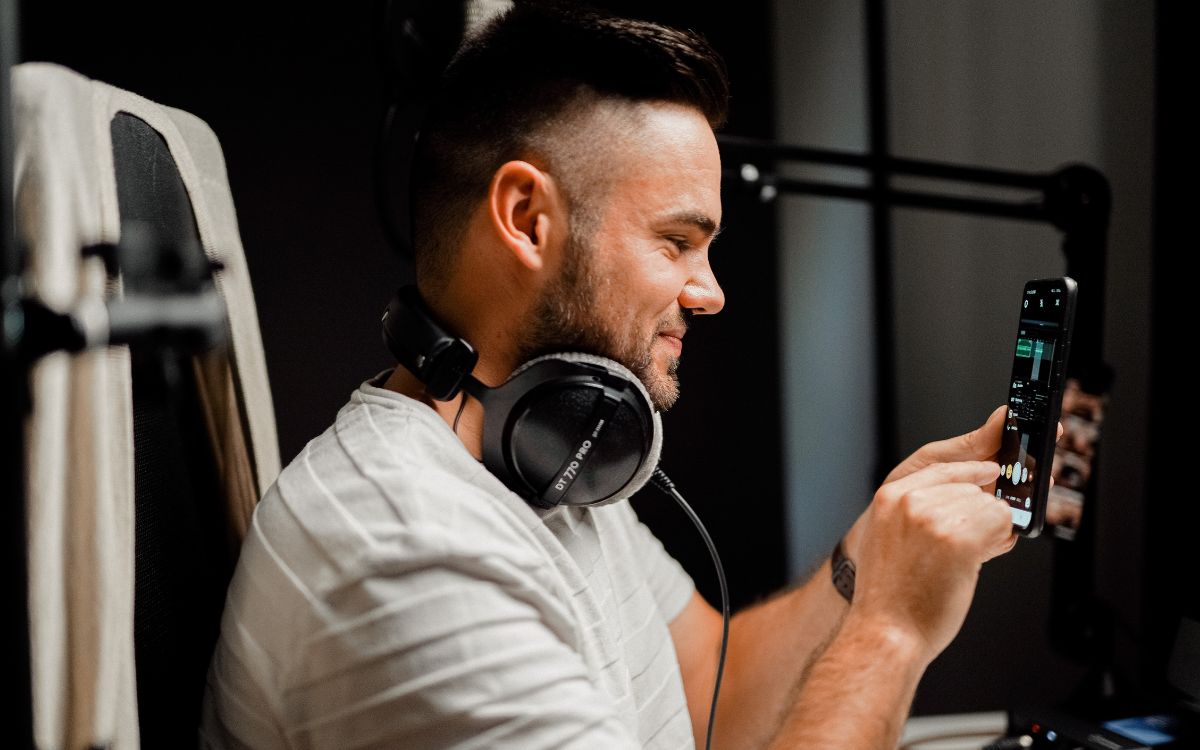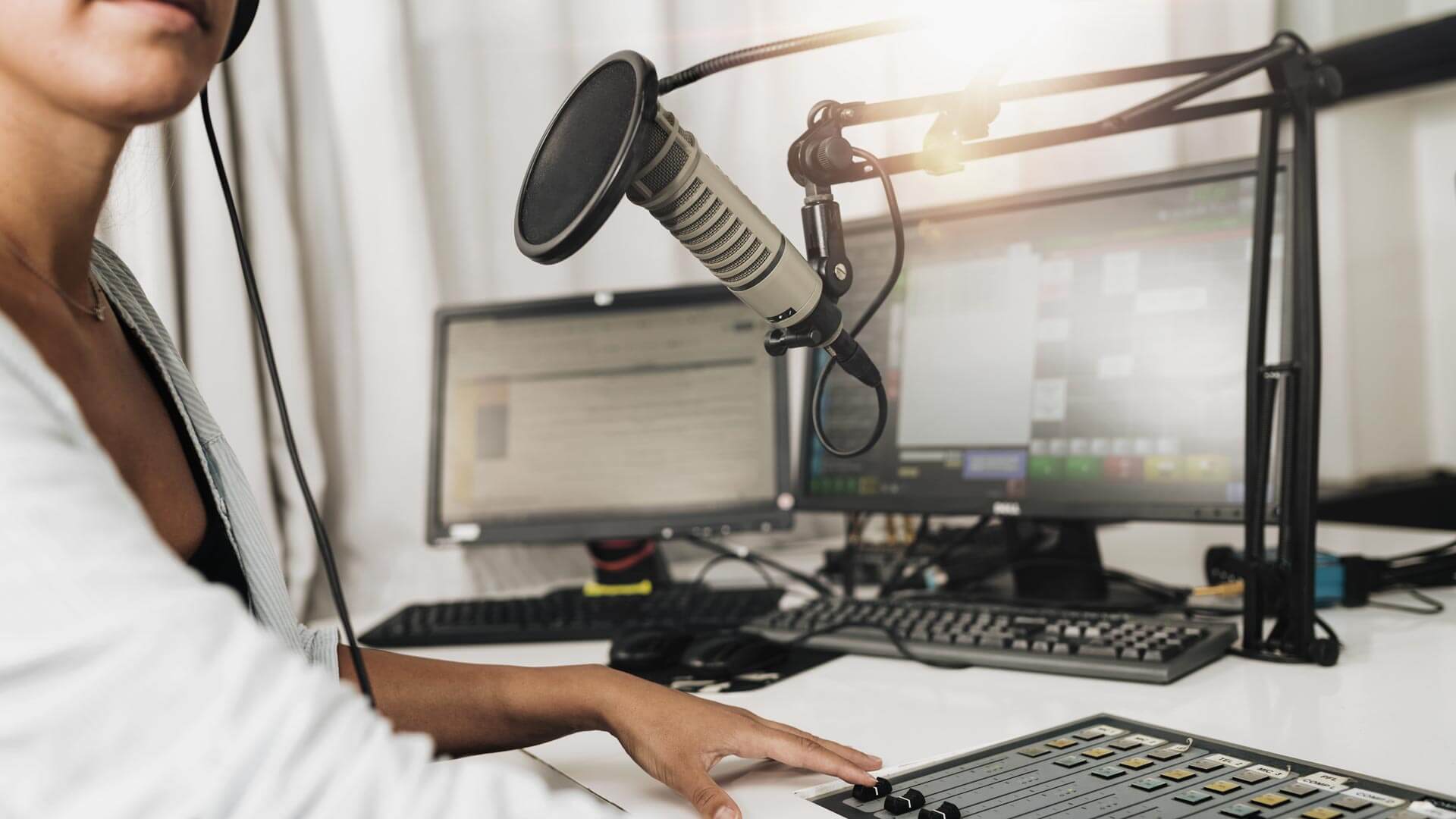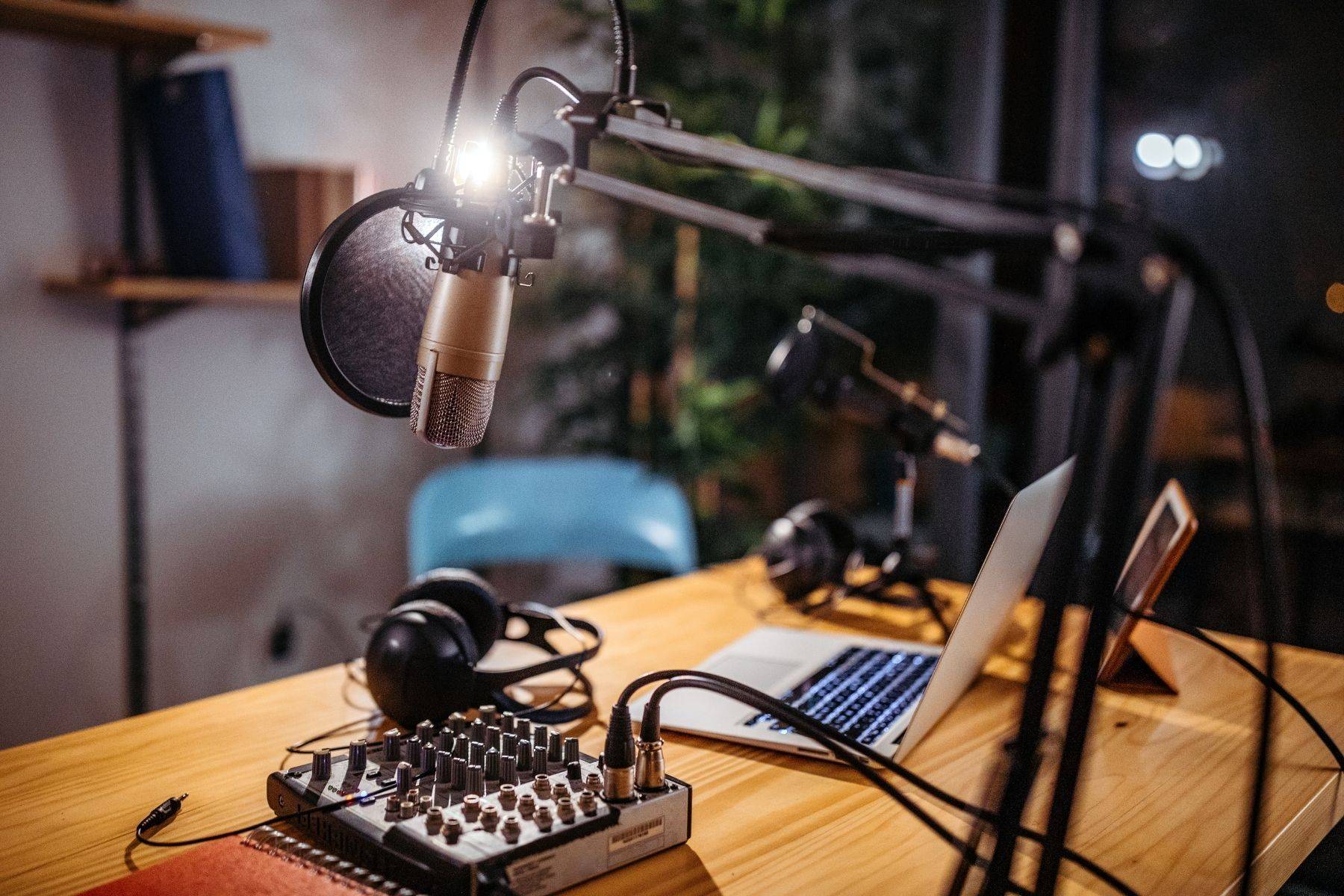Home>Events & Info>Podcast>How To Do A Podcast Remotely


Podcast
How To Do A Podcast Remotely
Modified: January 22, 2024
Learn how to easily record and produce a podcast remotely, using our step-by-step guide. Start your podcasting journey today!
(Many of the links in this article redirect to a specific reviewed product. Your purchase of these products through affiliate links helps to generate commission for AudioLover.com, at no extra cost. Learn more)
Table of Contents
Introduction
Podcasts have become an increasingly popular medium for sharing knowledge, storytelling, and connecting with audiences around the world. In the past, recording a podcast meant gathering in a studio with your co-host or guests. However, with advancements in technology, it is now possible to create high-quality podcasts remotely, without the need for everyone to be in the same physical location.
Remote podcasting offers numerous advantages. It allows you to collaborate with co-hosts and guests from anywhere, expanding your pool of potential interviewees and contributors. It also removes the constraints of time and location, making it easier to schedule interviews and record episodes.
While remote podcasting comes with its own set of challenges, with the right tools and techniques, you can create professional-quality podcasts that sound as if they were recorded in a studio. In this article, we will explore the key steps and considerations involved in mastering the art of remote podcasting.
Whether you are a seasoned podcaster looking to switch to remote recording, or a beginner wanting to start your podcast journey from the comfort of your own home, this guide will provide you with the knowledge and tools you need to get started.
Choosing the Right Tools for Remote Podcasting
When it comes to remote podcasting, having the right tools is crucial for ensuring smooth and high-quality recordings. Here are some essential tools to consider:
- Recording Software: Choose a reliable recording software that allows for remote recording, such as Zencastr, SquadCast, or Riverside.fm. These platforms offer features like separate audio tracks for each participant, automatic syncing, and high-definition audio.
- Microphones: Invest in quality microphones for yourself and your guests. USB microphones like the Audio-Technica ATR2100x or the Blue Yeti offer excellent sound quality and are beginner-friendly. For a more professional setup, consider XLR microphones like the Shure SM7B or the Rode Procaster.
- Headphones: Use closed-back headphones to prevent audio bleed. Look for comfortable options like the Audio-Technica ATH-M50x or the Sony MDR-7506.
- Internet Connection: A stable and high-speed internet connection is crucial for remote podcasting. Make sure you have a reliable internet service provider, and consider using an Ethernet connection for better stability.
- Pop Filters and Shock Mounts: Attach a pop filter to your microphone to reduce plosive sounds caused by air hitting the microphone capsule. A shock mount can help isolate the microphone from vibrations and handling noise.
- Remote Communication: Use communication tools like Zoom or Skype to connect with your guests and conduct interviews. These platforms offer features like video conferencing and screen sharing, which can enhance the remote podcasting experience.
- Backup Solutions: It’s always wise to have a backup plan in case of technical glitches or data loss. Consider using cloud storage services like Google Drive or Dropbox to back up your recordings.
Remember, while having top-notch equipment can improve the quality of your recordings, it’s also important to consider your budget and the requirements of your specific podcast. With a combination of the right software, hardware, and communication tools, you can ensure a seamless and professional remote podcasting experience.
Setting Up Your Recording Space
Creating a suitable recording space is essential for remote podcasting. Here are some tips to help you set up your recording space:
- Select a Quiet Environment: Choose a location where you can minimize external noise and interruptions. Find a quiet room in your home or use soundproofing techniques to reduce unwanted background noise.
- Avoid Reverberation: Rooms with hard surfaces can cause echo and reverberation in your recordings. To mitigate this, add soft furnishings like curtains, carpets, or foam panels to absorb echoes and create a more acoustically pleasing environment.
- Position Yourself and the Microphone: Sit close to your microphone to ensure clear and consistent audio. Place the microphone at a height and angle that allows you to speak directly into it, about 6-12 inches away, to capture the best sound quality.
- Consider a Mobile Setup: If you don’t have a dedicated space, consider creating a mobile setup using a portable sound booth or a microphone isolation shield. These can help minimize external noise and provide a controlled recording environment.
- Control Ambient Noise: Turn off any appliances, fans, or other sources of background noise in the room. Close windows to reduce external sounds like traffic or neighborhood noise.
- Test Your Setup: Before recording, do a test run to check the audio quality and make any necessary adjustments. Listen for any background noise, echo, or audio distortions and make the necessary changes in your setup.
Remember, the key to a good recording space is to create an environment that allows for clear and clean audio. Experiment with different setups and equipment placements to find what works best for you.
Optimizing Audio Quality
High-quality audio is paramount for producing professional-sounding podcasts. Here are some tips to optimize the audio quality of your remote podcast:
- Use High-Quality Microphones: Invest in good-quality microphones for yourself and your guests. This will greatly enhance the clarity and richness of your audio. Consider using dynamic microphones for excellent noise rejection and a more focused sound.
- Ensure Proper Mic Technique: Encourage yourself and your guests to speak directly into the microphone and maintain a consistent distance. This will help capture clean and balanced audio.
- Reduce Background Noise: Minimize any background noise by choosing a quiet environment and using soundproofing techniques, like foam panels or curtains. Additionally, remind participants to mute their microphones when they are not speaking.
- Use Pop Filters: Attach a pop filter or windscreen to your microphone to reduce plosive sounds or harsh breathing noises caused by air hitting the microphone. This will result in a more pleasant listening experience.
- Monitor Audio Levels: Keep an eye on the audio levels during recording to ensure that they are not too low or too high. Adjust the gain settings on your microphone or recording software accordingly to prevent distortion or clipping.
- Consider Post-Processing: After recording, you can enhance the audio quality through post-processing. This can include removing background noise, equalizing audio levels, and applying compression or other effects to achieve a balanced and professional sound. Use software like Adobe Audition or Audacity for these tasks.
- Use Lossless File Formats: When exporting your final audio, choose lossless file formats like WAV or FLAC to preserve the audio quality. These formats do not compress the audio, resulting in a higher fidelity sound.
Remember, achieving optimal audio quality is a combination of using proper equipment, creating a suitable recording environment, and implementing effective editing techniques. By focusing on these aspects, you can ensure that your remote podcast sounds polished and engaging to your audience.
Conducting Remote Interviews
Remote interviews are a common practice in podcasting, allowing you to connect with guests from anywhere in the world. Here are some tips to make the most out of your remote interviews:
- Test Connectivity: Before the interview, make sure to check the internet connection and audio quality of both parties. A stable and reliable internet connection is essential for smooth communication.
- Provide Guidelines: Send your guests guidelines and expectations ahead of time. This can include talking points, suggested questions, and any specific technical requirements.
- Use Headphones: Advise your guests to use headphones to prevent echo and feedback. This will help improve the audio quality during the interview.
- Practice Active Listening: During the interview, practice active listening to ensure a fluid conversation. Give your guest time to speak and avoid interrupting. This will help create a more engaging and natural flow to the conversation.
- Ask Open-Ended Questions: Encourage your guests to provide detailed and thoughtful responses by asking open-ended questions. This will allow for more insightful discussions and provide valuable content for your listeners.
- Respect Time Zones: Be mindful of time zone differences when scheduling interviews with guests across different regions. Ensure that both parties have a clear understanding of the agreed-upon time for the interview.
- Record Separate Audio Tracks: Whenever possible, record separate audio tracks for each participant. This will provide flexibility in post-production and enable you to adjust audio levels individually.
- Engage in Small Talk: Before the interview officially begins, engage in some casual conversation to help your guest feel at ease. This will create a friendly and welcoming environment, fostering a more comfortable interview experience.
- Edit with Precision: During the editing process, remove any technical glitches or interruptions to ensure a seamless listening experience. Additionally, consider trimming any unnecessary pauses or repetitions to maintain a smooth and engaging flow.
By following these tips, you can conduct professional and engaging remote interviews that captivate your audience and bring out the best in your guests.
Managing Recording and Editing Workflow
Efficiently managing your recording and editing workflow is essential for producing high-quality podcasts. Here are some tips to help streamline your process:
- Plan Ahead: Create a schedule and outline for your podcast episodes. This will ensure that you stay organized and have a clear roadmap for each recording and editing session.
- Prepare Show Notes: Before each episode, prepare detailed show notes with key points, questions, and any relevant information. These notes will guide you during the recording and help you stay on track.
- Record Raw Material: Aim to capture more content than you actually need. It’s better to have too much material that can be trimmed down later, rather than not having enough to work with. This will give you more options during the editing process.
- Label and Organize Files: Maintain a well-organized system for storing and labeling your audio files. Use consistent naming conventions and folder structures to easily locate and manage your recordings.
- Edit with Precision: When editing your podcast, focus on creating a polished final product. Remove any technical issues, background noise, or lengthy pauses. Pay attention to the flow of the conversation and ensure a coherent and engaging experience for your listeners.
- Utilize Automation Tools: Explore software and plugins that can automate repetitive tasks during editing. For example, noise reduction tools and voice levelers can help streamline the editing process, saving you time and effort.
- Collaborate Effectively: If you have co-hosts or a team involved in the editing process, establish clear communication channels and workflows. Use project management tools like Trello or Asana to assign tasks and track progress.
- Add Music and Sound Effects: Enhance your podcast with background music or sound effects to create a more immersive and professional listening experience. Ensure that you have the appropriate licenses for any copyrighted material.
- Quality Check: Before publishing, listen to the final edited episode in its entirety. Pay attention to audio quality, pacing, and content flow. Make any necessary adjustments or last-minute edits to ensure a flawless episode.
By implementing an organized workflow and utilizing efficient editing techniques, you can produce top-notch podcasts that captivate your audience and reflect the professionalism of your brand.
Collaboration and Communication
Effective collaboration and communication are crucial for successful remote podcasting, especially when working with co-hosts, guests, and editing teams. Here are some tips to improve collaboration and streamline communication:
- Establish Communication Channels: Use communication tools like Slack, Microsoft Teams, or Discord to create dedicated channels for podcast-related discussions. This allows for real-time communication and easy file sharing.
- Set Clear Roles and Responsibilities: Define the roles and responsibilities of each team member to avoid confusion and ensure a smooth workflow. This can include tasks such as researching guests, scheduling interviews, editing, and social media promotion.
- Hold Regular Team Meetings: Schedule regular team meetings to discuss podcast progress, upcoming episodes, and any challenges. These meetings help keep everyone on the same page and foster a sense of camaraderie.
- Share a Content Calendar: Use a shared content calendar (Google Calendar, Trello, etc.) to plan and track episode topics, release dates, and guest appearances. This ensures everyone is aware of the podcast schedule and can contribute accordingly.
- Provide Detailed Briefs: When working with guests or team members, share detailed briefs outlining episode themes, talking points, and any specific instructions. This helps everyone understand the podcast’s direction and align their contributions accordingly.
- Encourage Feedback and Ideas: Foster a collaborative environment by encouraging team members to share their ideas, suggestions, and feedback. This allows for a more diverse range of perspectives and contributes to the overall growth and improvement of the podcast.
- Utilize Project Management Tools: Use project management tools like Asana, Basecamp, or Trello to assign tasks, set deadlines, and track progress. This ensures that everyone knows what is expected of them and helps keep the workflow organized.
- Provide Timely Feedback: When reviewing podcast episodes, give clear and constructive feedback to your team members. Timely feedback helps improve future episodes and promotes growth and development within the team.
- Celebrate Milestones: Recognize and celebrate milestones, such as reaching a certain number of episodes or achieving significant download numbers. This boosts team morale and reinforces the value of everyone’s contributions.
By fostering open communication, establishing clear roles, and utilizing collaboration tools, you can create a cohesive team that works together seamlessly to produce outstanding podcast episodes.
Publishing and Promoting Your Remote Podcast
After putting in the hard work of recording and editing your remote podcast, it’s time to publish and promote it to reach a wider audience. Here are some key steps to effectively publish and promote your podcast:
- Choose a Podcast Hosting Platform: Select a reliable podcast hosting platform that will host and distribute your podcast to various podcast directories such as Apple Podcasts, Spotify, and Google Podcasts. Popular hosting platforms include Libsyn, Podbean, and Anchor.
- Create Eye-Catching Podcast Artwork: Design professional and eye-catching podcast artwork that reflects the theme and content of your podcast. It should be clear, visually appealing, and optimized for different platforms.
- Write a Compelling Podcast Description: Craft a concise and compelling podcast description that conveys the essence of your show. Make sure to include relevant keywords to improve searchability and attract potential listeners.
- Submit Your Podcast to Directories: Once your podcast is ready, submit it to popular podcast directories and platforms. Follow the submission guidelines for each platform and ensure your podcast is properly categorized.
- Promote Your Podcast on Social Media: Utilize social media platforms like Twitter, Facebook, Instagram, and LinkedIn to promote your podcast. Create engaging posts, share episode highlights, and engage with your audience to build interest and increase visibility.
- Engage with your Audience: Encourage listeners to leave reviews and ratings on podcast platforms. Respond to comments and engage with your audience on social media and through email to build a loyal community.
- Network and Collaborate: Connect with other podcasters and industry influencers in your niche. Consider guest appearances on other podcasts, cross-promotions, or collaboration episodes to expand your reach and tap into new audiences.
- Utilize Email Marketing: Build an email list of loyal listeners and send regular newsletters with updates, featured episodes, and exclusive content. Email marketing can be a powerful tool to keep your audience engaged and informed.
- Create a Podcast Website: Establish a dedicated website for your podcast where listeners can find additional information about your show, access show notes, and easily listen to episodes. Make sure your website is mobile-friendly and SEO optimized.
- Monitor and Analyze Performance: Utilize podcast analytics tools provided by your hosting platform to monitor the performance of your podcast. Pay attention to download numbers, audience demographics, and listener engagement to gain insights and make data-driven decisions.
Remember, publishing and promoting your podcast requires consistent effort and engagement. Stay active, stay connected with your audience, and continuously seek new opportunities to grow your podcast’s reach.
Conclusion
Remote podcasting offers incredible opportunities for creating content, connecting with audiences worldwide, and sharing knowledge and stories. With the right tools, preparation, and collaboration, you can produce high-quality podcasts that captivate listeners and make a lasting impact.
In this article, we covered the key steps and considerations involved in remote podcasting. We discussed the importance of choosing the right tools, setting up a suitable recording space, optimizing audio quality, conducting remote interviews, managing the recording and editing workflow, and promoting your podcast effectively.
By investing in quality equipment, creating a quiet and acoustically treated recording space, and employing proper mic techniques, you can ensure professional-grade audio quality. Conducting remote interviews with clear communication and active listening can result in engaging conversations and insightful content for your listeners. Efficiently managing your recording and editing workflow, collaborating with your team, and utilizing communication tools and project management software will help streamline your process and improve productivity.
Once your podcast is ready for publication, remember to create compelling artwork and descriptions, submit it to podcast directories, promote it through social media and email marketing, and engage with your audience consistently. Monitoring your podcast’s performance and seeking opportunities to network and collaborate will help you expand your audience and grow your podcast’s reach.
Remote podcasting opens up a world of possibilities, allowing you to create content on your own terms and connect with diverse audiences. So, grab your microphones, master the art of remote podcasting, and embark on an exciting journey of sharing ideas, stories, and experiences through the power of audio.











